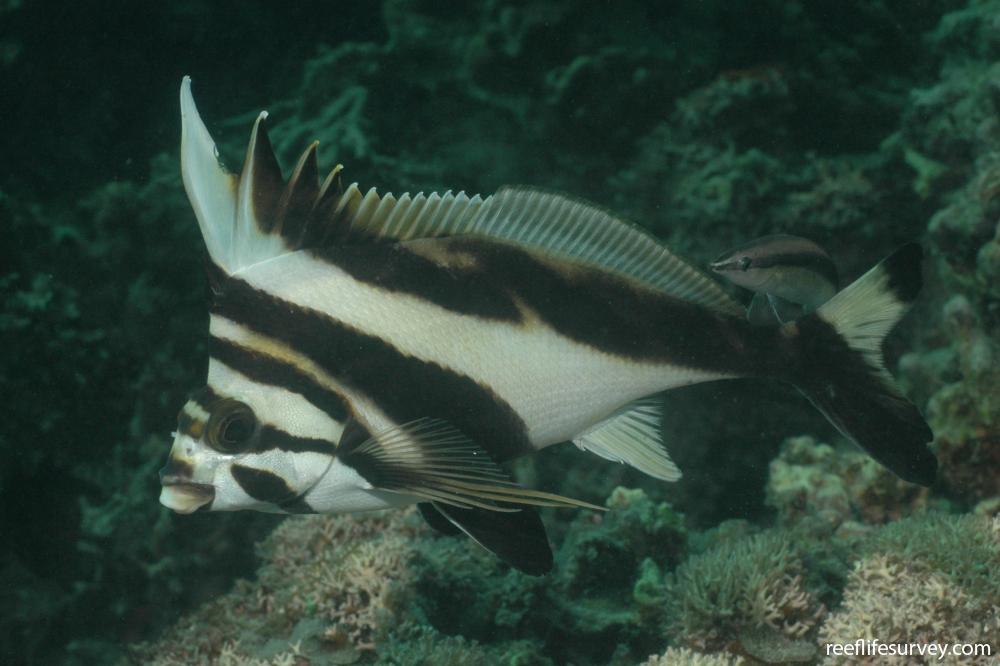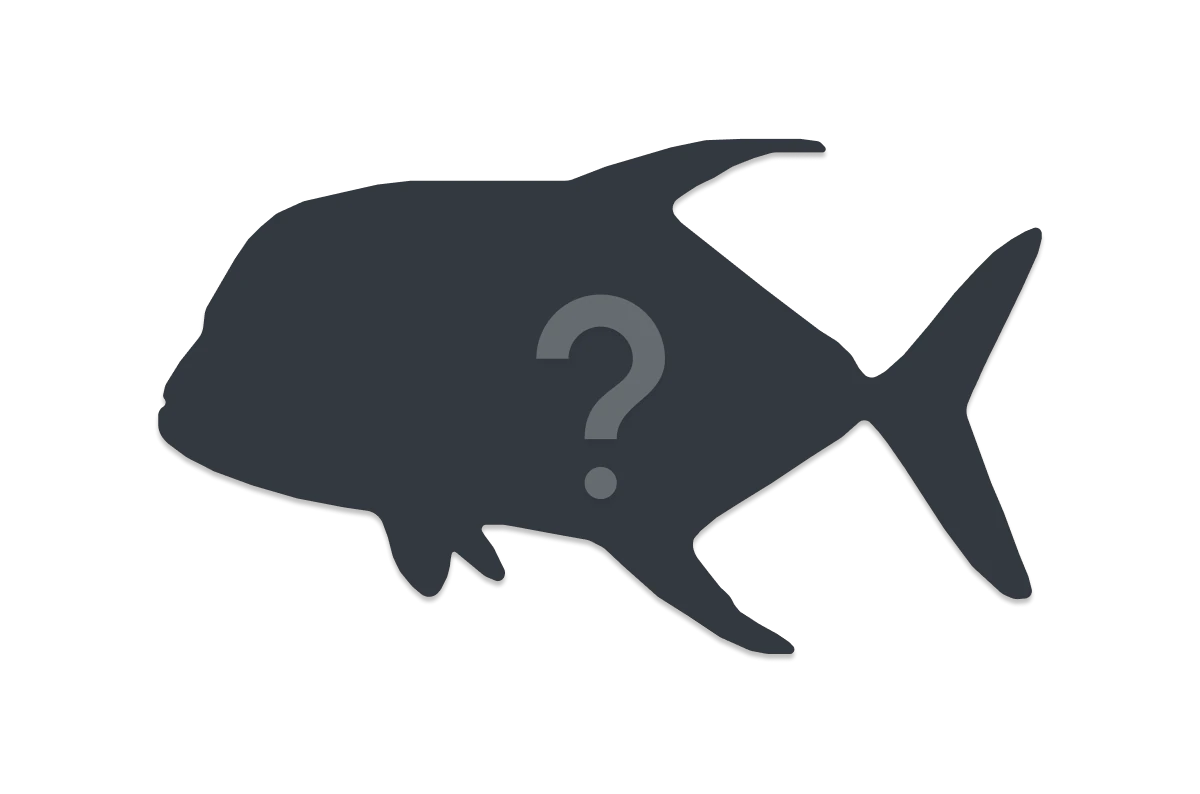Goniistius francisi
Blacktip morwong | Masked Moki | Cheilodactylus francisiSimilar Species
Same Genus
Distribution
Temperate Australasia
Description
Humpbacked profile. Body with black and white oblique bars, rearmost black bar largest, extending from mid back below dorsal fin onto lower lobe of tail, small horn near eye (often red), opercular margin orange, black patch below eye, and tip of upper tail lobe black. Similar to the temperate C. vestitus (Crested Morwong), but differs by black tip on upper tail lobe, and by location. Tasman Sea islands, New Caledonia and Kermadec islands. Previously misidentified as the Hawaiian C. vittatus (Hawaiian Morwong). Length to 50 cm.
Information
Max Size: N/A cm
Sea Temperature Range: 19.1-26.1°C
Depth: 6-88m
Habitat Generalization Index: 5.7
Also referred to as the SGI (Species Generalisation Index), this describes the habitat niche breadth of the species. Species with values less than 15 are found in a relatively narrow range of reef habitat types (specialists), while those over 25 may be found on most hard substrates within their range (generalists). Learn more here.
Conservation and Rarity
IUCN Status: Not Evaluated
Occurrence: Common (38.9% of sites)
Occurrence describes how often the species is found on surveys within its distribution. It is calculated as the % of reef sites surveyed by RLS divers across all the ecoregions in which the species has been observed
Abundance: Few (2 per transect)
Abundance is calculated as the average number of individuals recorded per RLS transect, where present.
Edit by: Joe Shields









